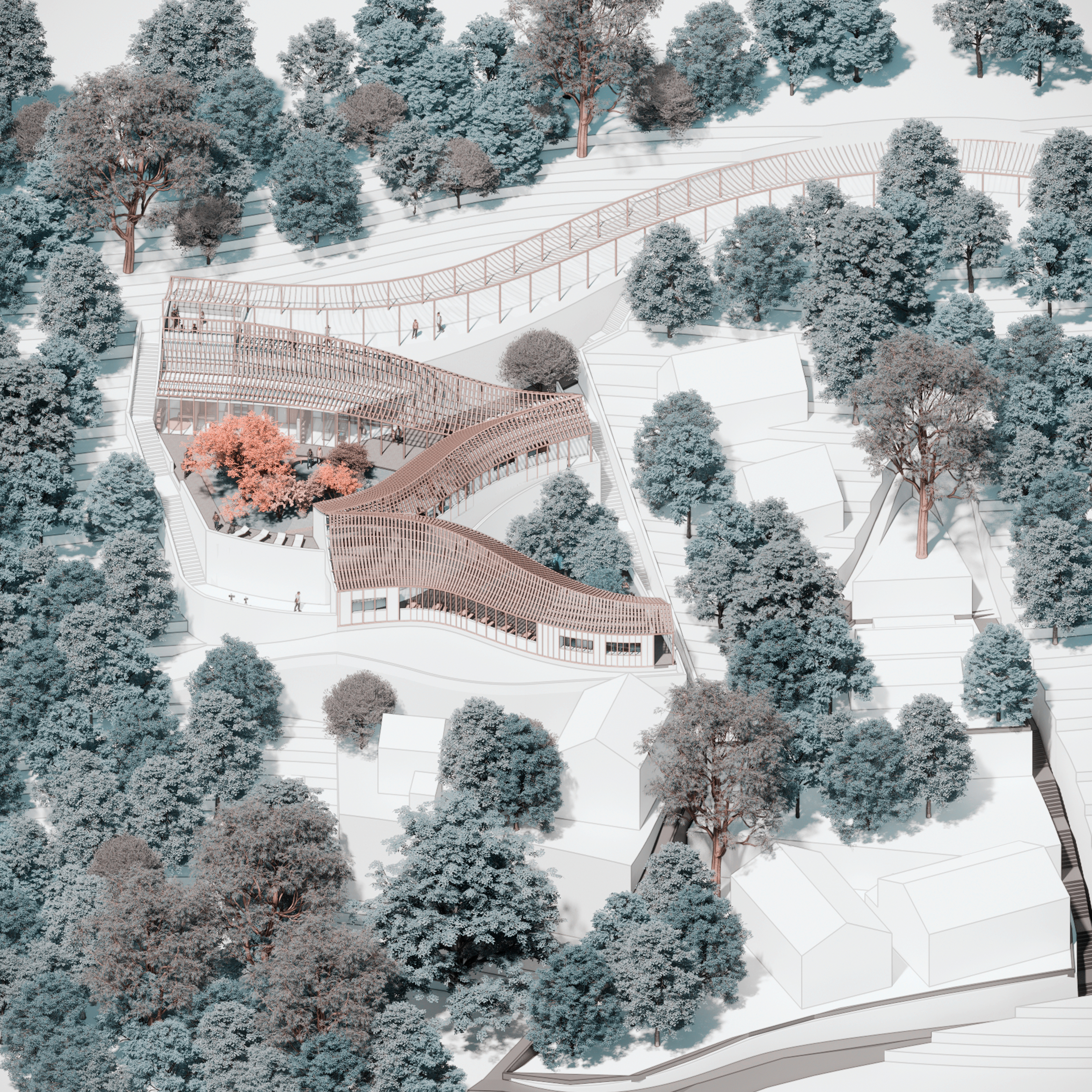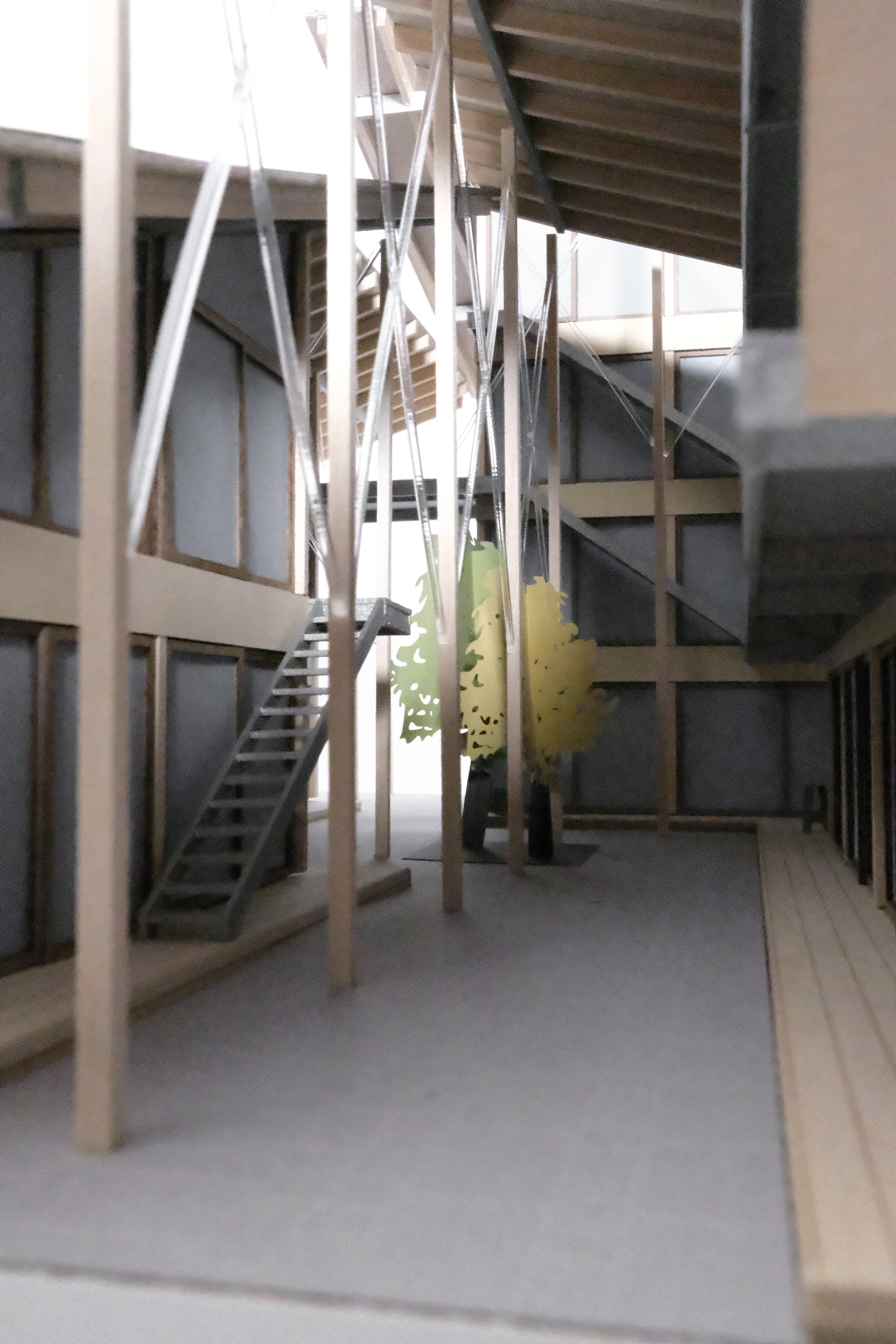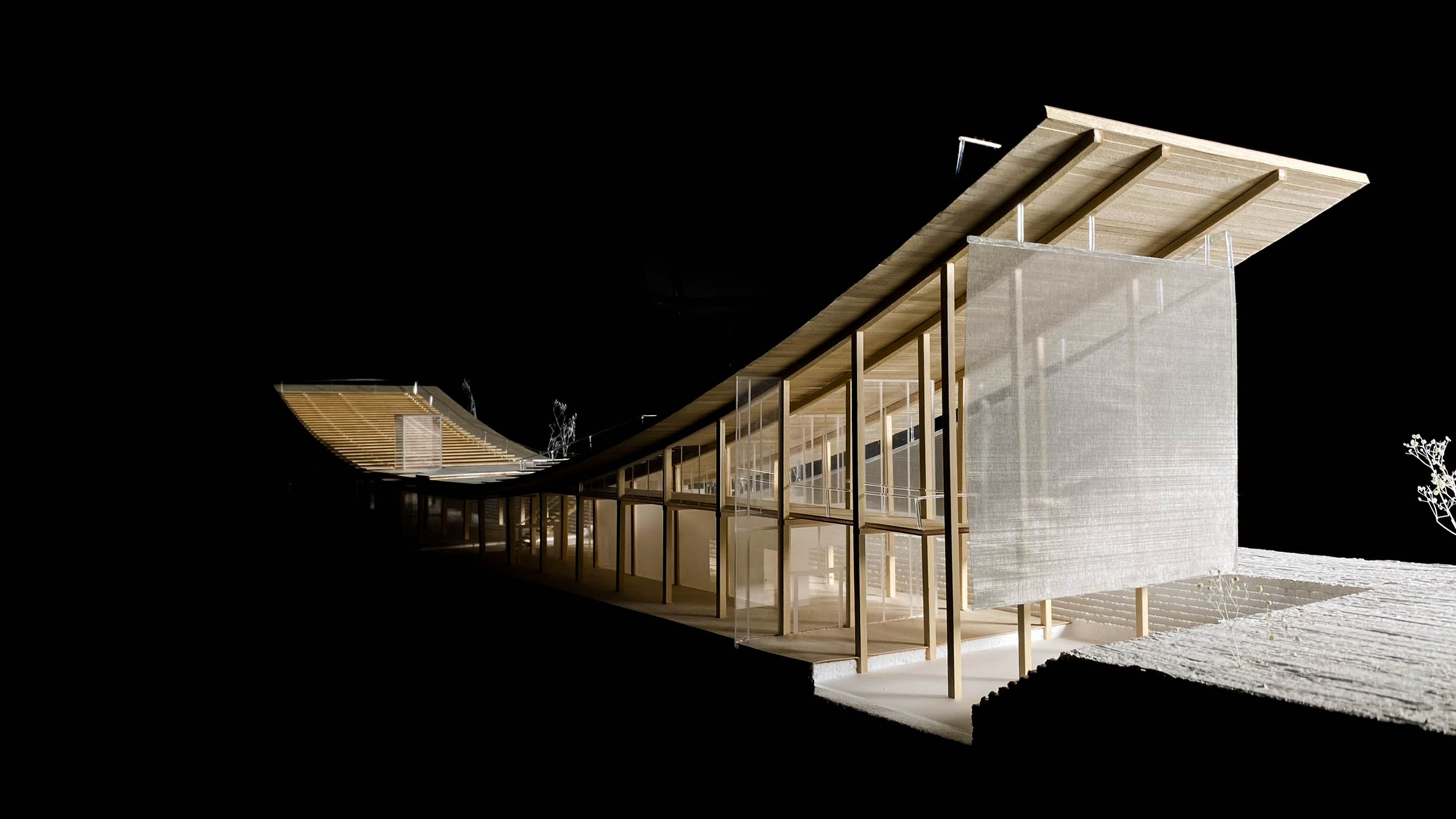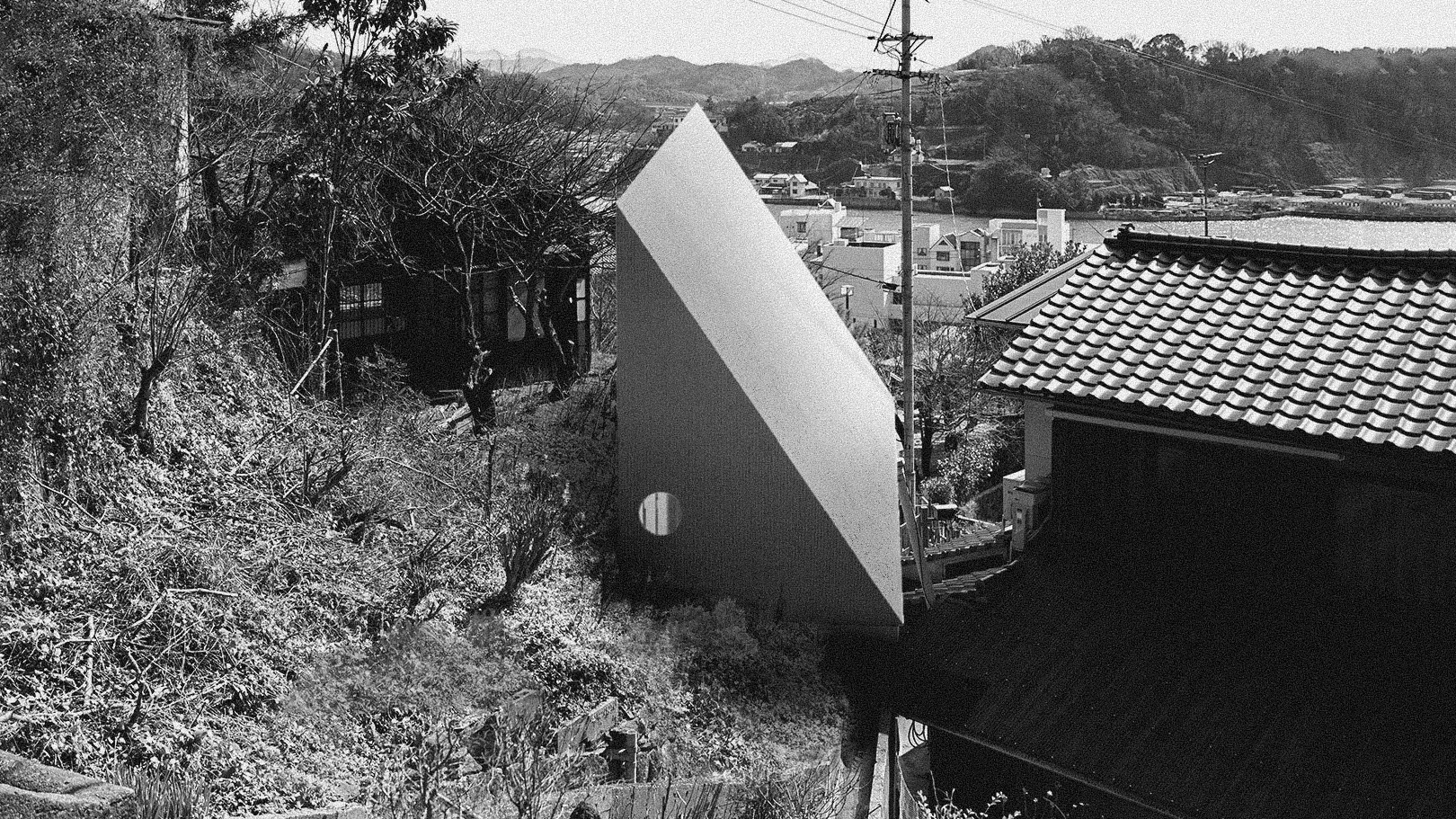Yoro Shisetsu & Albergo Diffuso

Partial view of the seaside of Onomichi’s central area as the studio model in which the proposals are incorporated. The relative scale of each project is engaged with its given situation, which will change partly because of the benefits of that project but also as a result of the overall impact of the many other proposals for nearby locations.
Onomichi is a port city in Hiroshima Prefecture in the western part of Japan. It has a history of shipbuilding and was also one of the main locations in Yasujiro Ozu’s 1953 film, Tokyo Story. In Ozu’s film the slow life of Onomichi is contrasted with the pace of modern Tokyo. An elderly couple from Onomichi make the long and arduous trip to the capital to visit their grown-up children, who have little time for them and show little respect for their traditional values.
The contrast between Tokyo and Onomichi is still evident today. The population of the latter city has been gradually declining over the years. Onomichi is typical of other small Japanese cities experiencing the stark consequences of demographic change, from an aging population to a low birthrate, from depopulation to a lack of local resources such as supermarkets and infrastructure.
Because of its scale and history, Onomichi provides a valuable case study for addressing demographic change and, more specifically, the question of whether the spatial transformation and revitalization of smaller towns can create incentives for both local inhabitants and internal migrants. New opportunities like ferry and cycling tourism have become an important part of the city’s identity as it makes the transition from its traditional role as a center for shipbuilding and tries to attract a younger generation of migrants from other parts of Japan.
The specific realities of contemporary Onomichi formed the basic framework for this studio, where a dozen graduate students with a diversity of educational backgrounds and experiences took on board the task of designing their proposals and recommendations for the city. The approach of the studio was both singular and collective, in the sense of seeking individual and specific projects while at the same time creating the idea of an ensemble or dense amalgam of proposals for a multiplicity of sites within the urban core of the city.
The question of Onomichi as a typical small city, where our investigations and recommendations could be considered and used by other similar cities, makes Onomichi a useful laboratory for the study of urbanization at the intersection of demographic change in Japan.



